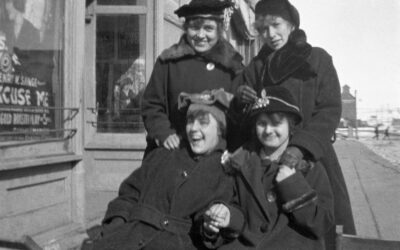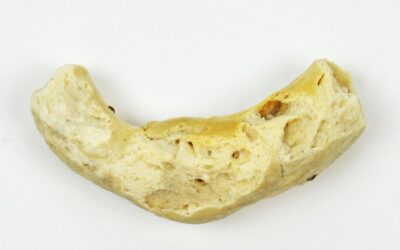HISTORY NEBRASKA MANUSCRIPT FINDING AID
RG1429.AM: Standing Bear, ca. 1834-1908
Papers: 1879; 1915; 1951-1952
Ponca Reservation, Nebraska: Ponca Chief and Speaker for Native American rights
Size: Two folders
BIOGRAPHICAL NOTE
Standing Bear was born on Ponca land, near the mouth of the Niobrara, in what is now Nebraska around 1834. (Some sources give his birth year as 1829.) His Indian name was “Ma-chu-nah-zah.” Because he showed leadership abilities, he became a chief at an early age.
In 1858 the Ponca relinquished all land they had claimed, except for a small reserve along the Niobrara. They tried to change from nomadic buffalo hunters to farmers. In the Treaty of 1868, the U.S. government mistakenly included the Ponca’s land in territory assigned to the Sioux. Following this, the Sioux raided the area claimed by the Ponca and many lives were lost. The government’s solution to end the raids was to move the Ponca to Indian Territory (present-day Oklahoma).
After the Ponca were told in 1876 that they were to be moved to Indian Territory, they sent ten chiefs with a U.S. agent to evaluate the land and its prospects. Based on their observations, the tribe voted not to go to Indian Territory. The government then decided to send the Ponca to Indian Territory, with or without their consent and the U.S. Army escorted the reluctant Ponca to their new home.
When they arrived in Indian Territory, the Ponca found that no provision for food or shelter had been made for them. As a result, many of the tribe, including Standing Bear’s son, did not survive the first winter. In defiance of the relocation order, Standing Bear and thirty others tried to return to their Nebraska home. They set out on foot, begging along the way for food and shelter. Near Omaha, they stopped to visit their relatives the Omaha Tribe, where they were arrested on orders of the Secretary of the Interior. Standing Bear and the other Ponca were held by General George Crook at Fort Omaha. Although they were ordered back to Indian Territory, a delay was obtained so that they could rest and regain their health. During this time, their story was told to the public by journalist Thomas H. Tibbles.
With the help of Tibbles and two lawyers, John L. Webster and Andrew J. Poppleton (and probably General Crook), Standing Bear petitioned the court for his right to return home. Judge Elmer S. Dundy had to rule on whether an Indian had the rights of freedom guaranteed by the U.S. Constitution. The government’s lawyer, G.M. Lambertson, tried to prove than an Indian was neither a person nor a citizen and, therefore, did not have the right to bring suit against the government. On April 30, 1879, Judge Dundy stated than an Indian is a person within the law and that the Ponca were being held illegally. Standing Bear and the Ponca were freed. The government arranged for the return of the Ponca from Indian Territory and land along the Niobrara River was allotted to them.
Between 1879 and 1883 Standing Bear traveled in the eastern states and spoke about Indian rights. He was accompanied by Thomas Tibbles, Susette (Bright Eyes) LaFlesche Tibbles, and Francis LaFlesche. After he returned from his travels, Standing Bear resided on his old home on the Niobrara and farmed. He died in 1908.
SCOPE AND CONTENT NOTE
This collection consists of two folders of manuscript material relating to the trial of Standing Bear and his burial site. The 1879 trial transcript is a copy of the proceedings in the case Chief Standing Bear brought against General George Crook, Commander of the Department of the Platte. A copy of this material is also filed in the State Archives collection RG0512: U.S. District Court, District of Nebraska. The second folder includes correspondence about Standing Bear’s grave, 1951-1952, and a 1915 reminiscence by Caroline L. Poppleton about his war bonnet.
Note: A digitized PDF copy of the trial transcript is available for download through the National Archives.
INVENTORY
Folder
- Trial transcript and related documents: Standing Bear v. Crook, 1879
- Correspondence about Standing Bear’s grave, 1951-1952; reminiscence about Standing Bear’s war bonnet by Caroline L. Poppleton, 1915
Subject headings:
Dundy, Elmer S. (Elmer Scipio), 1830-1896
Indians of North America — Civil rights
Indians of North American — Government relations
Lambertson, G. M. (Genio M.) 1850-1902
Ponca Indians
Poppleton, Andrew J. (Andrew Jackson), 1830-1896
Poppleton, Caroline L
Tibbles, Thomas H. (Thomas Henry), 1840-1928
Webster, John L. (John Lee), 1847-1928
AIF/kfk 11-17-2003
Revised TMM 05-09-2007



